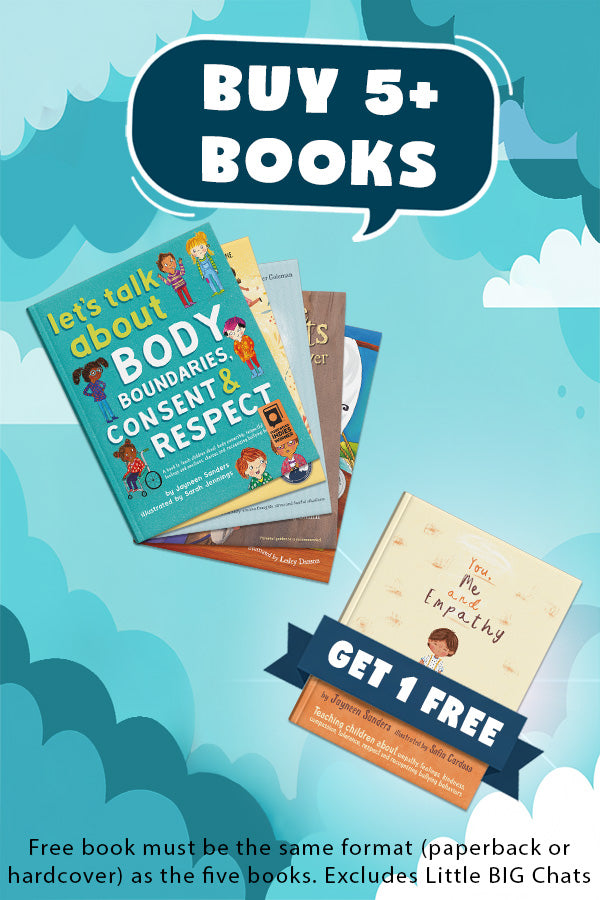
Statistics
Eye-Opening Statistics emphasizing the importance of Body Safety Education and the empowerment of children.
Statistics
Australian Institute of Criminology:
"A survey of Australian tertiary students found that 1 in 4 girls and 1 in 11 boys had been the victim of child sexual abuse ..."
http://www.aic.gov.au/publications/previous%20series/vt/1-9/vt03.aspx
"These estimates have ranged from figures of 1 in 4 girls to somewhere between 1 in 7 and 1 in 12 boys as being victims of sexual abuse ..."
http://www.aic.gov.au/documents/E/B/0/%7BEB0FEBC9-4838-415E-8967-51E80C3E32DD%7Dti146.pdf
"In total, the ABS (2005: 42) estimated that in 2005, 1,294,000 people living in Australia (337,400 males and 956,600 females) had experienced sexual abuse before the age of 15."
"... of all those who reported having been victimised sexually before the age of 15 years, 11.1 percent were victimised by a stranger. More commonly, child sexual abuse was perpetrated by a male relative (other than the victim’s father or stepfather; 30.2%), a family friend (16.3%), an acquaintance or neighbour (15.6%), another known person (15.3%), or the father or stepfather (13.5%;..."
http://www.aic.gov.au/publications/current%20series/tandi/421-440/tandi429.aspx
The Childrens Hospital at Westmead:
"... young people in this study who experienced child sexual abuse had a suicide rate which is ten to thirteen times the national Australian rate for this age group. The study also found that almost one third of the abused young people had reported attempted suicide over the period of the study."
http://www.chw.edu.au/about/news/items/2001/87.htm
CASA Fact Sheet: Statistics about sexual assault
1 in 3 women and 1 in 6 men will be sexually abused before the age of 16
Girls between the ages of 10 and 14 were the greatest proportion of victim/survivors
www.casa.org.au/casa_pdf.php?document=statistics
UNICEF Data (2017)
“Worldwide, around 15 million adolescent girls aged 15 to 19 have experienced forced sex in their lifetime; 9 million of these girls had been victimized within the past year. ”
“Data from 28 countries indicate that 9 in 10 adolescent girls who have experienced forced sex report being victimized by someone close/known to them.”
“Based on data from 30 countries, only 1% of adolescent girls who have experienced forced sex reached out for professional help.”
https://data.unicef.org/topic/child-protection/violence/sexual-violence/
Darkness To Light — Child Sexual Abuse Statistics 2017
“About 90% of children who are victims of sexual abuse know their abuser. About 60% of children who are sexually abused are abused by people the family trusts.”
(Finkelhor, D. (2012). Characteristics of crimes against juveniles. Durham, NH: Crimes against Children Research Center.
Whealin, J. (2007-05-22). “Child Sexual Abuse”. National Center for Post Traumatic Stress Disorder, US Department of Veterans Affairs.)
http://www.d2l.org/wp-content/uploads/2017/01/all_statistics_20150619.pdf
Australian Institute of Health and Wellbeing — Child Protection Data
“During 2017–18, 159,000 (28.7 per 1,000) Australian children received child protection services (investigation, care and protection order and/or were in out-of-home care). Aboriginal and Torres Strait Islander children were 8 times as likely as non-Indigenous children to have received child protection services.”
“In 2017–18 there were 26,560 children (aged 0–17 years) in substantiated abuse cases (physical, emotional and/or sexual abuse). ”
Australian Institute of Health and Wellbeing — Domestic Violence Data
“1 in 6 (16%, or 1.5 million) women reported having experienced physical and/or sexual abuse before the age of 15 (as girls), and 1 in 9 (11%, or 992,000) men reported having experienced this abuse when they were boys (ABS 2017b).”
Australian Institute of Family Studies — Who Abuses Children? (2014)
“Findings from the ABS Personal Safety Survey (2005) indicated that for participants who had experienced sexual abuse before the age of 15, only 13.5% identified that the abuse came from their father/stepfather, 30.2% was perpetrated by other male relative, 16.9% by family friend, 15.6% by acquaintance/neighbour, and 15.3% by other known person (ABS, 2005). ”
“Data from the US National Incident-Based Reporting System (NIBRS) showed that males made up 90% of adult child sexual assault perpetrators, while 3.9% of perpetrators were female, with a further 6% classified as “unknown gender” (McCloskey & Raphael, 2005).”
https://aifs.gov.au/cfca/publications/who-abuses-children
Australian Bureau of Statistics — Personal Safety Survey 2012
“15% of women had been sexually assaulted by a known person compared to 4% who were assaulted by a stranger”
https://www.abs.gov.au/ausstats/abs@.nsf/Lookup/4906.0Chapter5002012
ABS — Personal Safety Survey 2016
Approximately 2.5 million Australian adults (13%) have experienced abuse during their childhood. This includes 1.6 million adults (8.5%) who experienced childhood physical abuse and 1.4 million adults (7.7%) who experienced childhood sexual abuse.
The majority of persons who experienced childhood abuse knew the perpetrator and experienced multiple incidents of abuse.
The age at which abuse commenced varied depending on the type of abuse experienced. The average age at which the first incident of abuse occurred was:
- 8.8 years for persons who experienced sexual abuse only;
- 8.1 years for persons who experienced physical abuse only; and
- 6.8 years for persons who experienced both physical and sexual abuse.
Most adults who were abused as children experienced their first incident before the age of 10.
86% of persons (784,400) who experienced childhood sexual abuse knew the perpetrator(s) of the first incident abuse.
For the first incident of childhood sexual abuse, non-familial known persons were the most common perpetrators. An estimated 51% (467,500) of persons who experienced childhood sexual abuse were first abused by a non-familial known person.

Mathews B, Pacella RE, Scott JG, et al 2023, 'The prevalence of child maltreatment in Australia: findings from a national survey', The Medical Journal of Australia, 218

